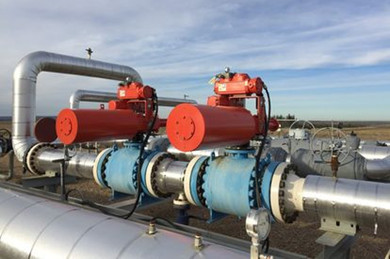Table of Contents
ToggleIf you are looking for a good job in the oil and gas industry, then you should consider a career in ball valves. Ball valves are used in a wide range of applications, including hydraulic, pneumatic, and petrochemical. This industry is expected to grow substantially in the future.
The oil and gas industry is booming with increasing investment in exploration and production activities. The oil and gas industry has a strong connection with energy consumption in different parts of the world. Consequently, there will be a strong demand for ball valves in this market.
Besides the oil and gas industry, ball valves are also a vital service in water treatment. Moreover, ball valves can also be used in the supply of clean gases. These valves can provide excellent flow control for the entire service life of the system.
If you want to know more about the use of ball valves in the oil & gas industry, continue reading this article.
What Are Ball Valves?
Ball valves have a ball within them that prevents reverse flow. They seal the entrance of a flow to prevent backflow and force the fluid to flow in one direction only. Ball valves are efficient and have many uses, including feed pumps, petroleum extraction, and some medical devices.
A ball valve is used in fluid flow systems, and the ball is a rotor that slides in and out of a seat. The valve’s seating ring is usually made of plastic or another durable material, such as ceramic. Most ball valves are able to operate in a medium with particles, and their sealing rings can be used in granular or powdery media. When choosing a ball valve, consider its fire resistance. Fire resistance is important in pipeline systems for flammable substances.
One-piece ball valves are the cheapest but can’t be maintained. Two-piece valves have two pieces, and the ball is inserted between them. Three-piece ball valves can be dismantled for maintenance or cleaning. These valves are best used for sanitary applications. The three-piece design has two end pieces and a single centre piece.
Use of Ball Valves in Oil and Gas Industry Applications
In addition to their traditional use in manufacturing water systems, ball valves are also found in a variety of other industrial applications. For example, enhanced oil recovery valves improve extraction efficiencies and well output, while tertiary recovery valves introduce gases and fluids to optimize flow and reduce viscosity. To get the best out of oil and gas companies, you need to invest in a ball valve.
The stem of the valve transfers linear or rotational force to the ball. In addition to this, the stem is rotated in one direction, which allows the ball to move within the body. In addition to their oil and gas industry applications, these valves can be used in industrial, residential, and chemical storage.
The structure of ball valves depends on their operation. A ball valve is composed of an actuator lever, a stem, and a spherical ball. The ball rotates when the actuator turns it. The spherical ball rotates around the stem, allowing it to control the flow of gas, air, and liquids. Moreover, ball valves are fast to open and close, with very little torque. They are also good for shut-off applications.
Choosing the correct ball valve is critical to the process flow and efficiency of the facility. The most appropriate valve for your application depends on your specific requirements and the type of environment you’re operating in.










